Spread throughout the main floor of the Discovery Building, the event offered kids the opportunity to hold brains, make objects float with superconductivity and jump into an immersive Virtual Reality experience.
Read the full article at: https://news.wisc.edu/kids-embrace-science-at-hands-on-expo/Uncategorized
Join us for Nite @ the Lab!
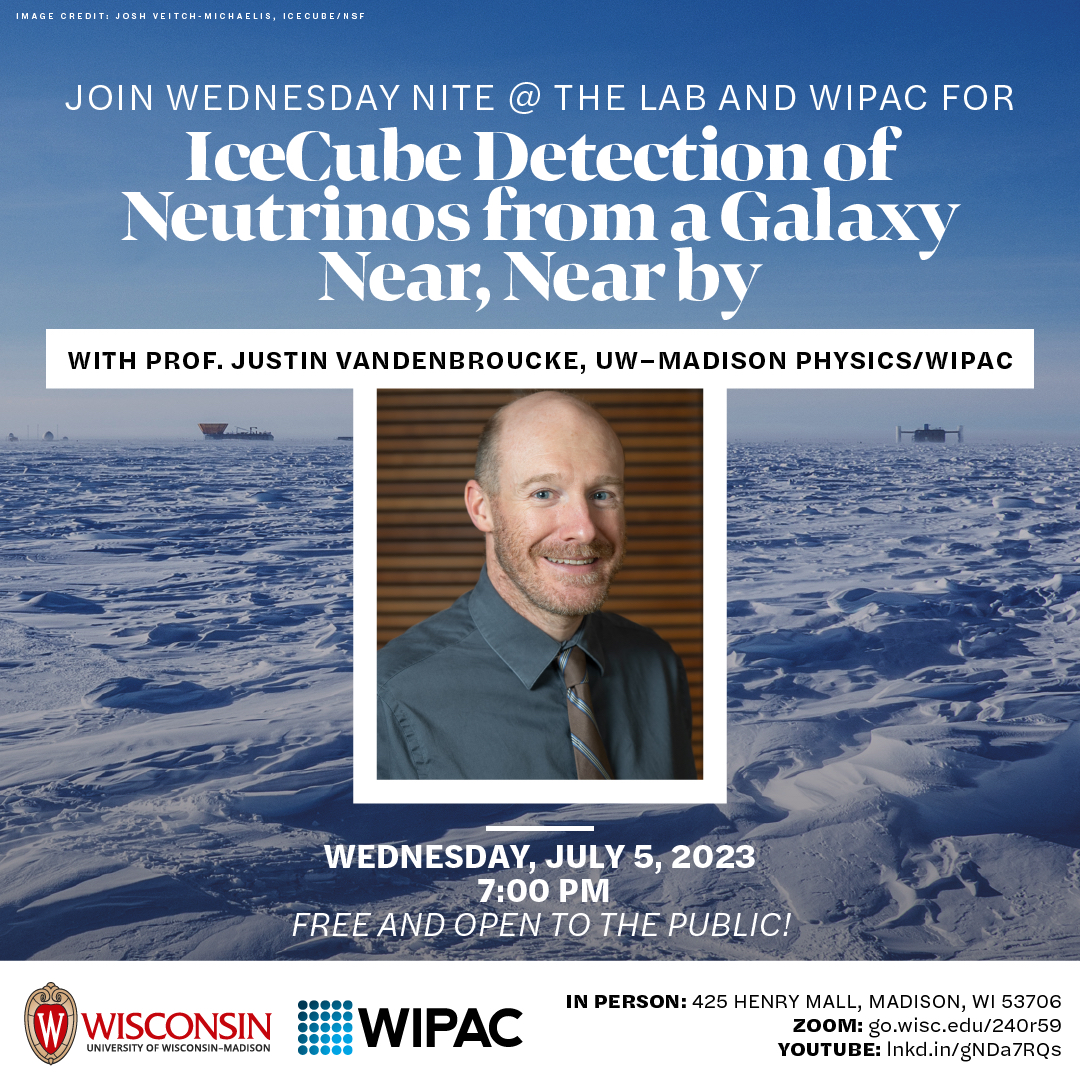
Astronomers Discover Planets in NASA Kepler’s Final Days of Observations
This story was originally published by NASA
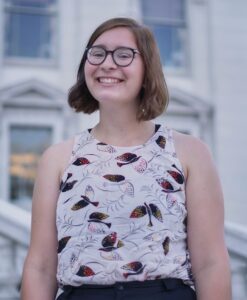
A team of astrophysicists — including a UW–Madison physics major — and citizen scientists have identified what may be some of the last planets NASA’s retired Kepler space telescope observed during its nearly decade-long mission.
The trio of exoplanets – worlds beyond our solar system – are all between the size of Earth and Neptune and closely orbit their stars.
”These are fairly average planets in the grand scheme of Kepler observations,” said Elyse Incha ’23. “But they’re exciting because Kepler observed them during its last few days of operations. It showcases just how good Kepler was at planet hunting, even at the end of its life.”
A paper about the planetary trio led by Incha was published in the May 30, 2023 issue of the journal Monthly Notices of the Royal Astronomical Society.
Gary Shiu awarded DOE funding to apply string theory lessons to AI
This post is modified from one originally published by the US Department of Energy
The U.S. Department of Energy (DOE) announced $4.3 million in funding for 16 projects in artificial intelligence (AI) research for high energy physics (HEP), including one from UW–Madison physics professor Gary Shiu for his work on applying knowledge gained from string theory research to improving AI techniques.
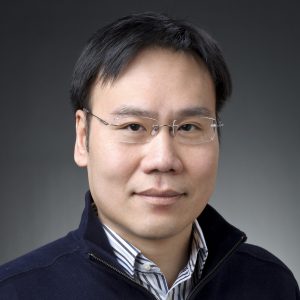
These awards support the DOE Office of Science initiative in artificial intelligence research to use AI techniques to deliver scientific discoveries that would not otherwise be possible, and to broaden participation in high energy physics research.
“AI and Machine Learning (ML) techniques in high energy physics are vitally important for advancing the field,” said Gina Rameika, DOE Associate Director of Science for High Energy Physics. “These awards represent new opportunities for university researchers that will enable the next discoveries in high energy physics.”
String theory addresses one of the deepest problems of contemporary physics, namely the reconciliation of gravity and quantum theory. It presents an enormously complex system that is well suited as a testbed for advancing AI techniques. The space of string theory solutions is vast, and the associated energy landscape is high-dimensional, computationally complex, and in general non-convex with unknown hidden structures. In recent years, a variety of AI methods have been used to tackle the string landscape.
“Now, the time is ripe for the pendulum to swing back: through studies of the string landscape, novel optimizers as well as AI techniques for discovering hidden structures of complex multi-dimensional data spaces are emerging,” Shiu says. “We propose to export lessons from string theory to advance AI algorithms generally for computationally complex constrained systems.”
Shiu expects that lessons drawn from this work would then be applied generally to AI applications in other large-scale computational problems.
Collaboration between NSF quantum centers finds path to fault tolerance in neutral atom qubits
Like the classical computers we use every day, quantum computers can make mistakes when manipulating and storing the quantum bits (qubits) used to perform quantum algorithms. Theoretically, a quantum error correction protocol can correct these errors in a similar manner to classical error correction. However, quantum error correction is more demanding than its classical counterpart and has yet to be fully demonstrated, putting a limit on the functionality of quantum computers.
In a theory paper published in Nature Communications, UW–Madison physicist Shimon Kolkowitz and colleagues show a new way that quantum errors could be identified in one type of qubit known as neutral atoms. By pinpointing which qubit experienced an error, the study suggests that the requirements on quantum error correction can be significantly relaxed, approaching a level that neutral atom quantum computers have already achieved.
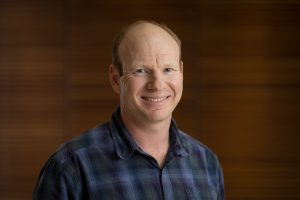
The study is a collaboration between two National Science Foundation Quantum Leap Challenge Institutes, Hybrid Quantum Architectures and Networks (HQAN) and Robust Quantum Simulation (RQS). UW–Madison is a member of HQAN.
“In quantum computing, a lot of the overhead in an error-correcting code is figuring out which qubit had the error. If I know which qubit it is, then the amount of redundancy needed for the code is reduced,” Kolkowitz says. “Neutral atom qubits are right on the edge of what you would call this fault-tolerant threshold, but no one has been able to fully realize it yet.”
Neutral atom qubits are made up of single atoms trapped with light. The logical gates between the atoms are performed by exciting the atoms to “Rydberg” states where the atom’s electron is excited far beyond its normal location. This quantum computing technique was first pioneered and experimentally demonstrated at UW–Madison by physics professors Mark Saffman and Thad Walker.
Currently, one error-corrected “logical” qubit is expected to require around 1000 physical qubits, exceeding the maximum number of qubits anyone has managed to wire together in any quantum computing system. Researchers have been studying different elements in Rydberg form as qubits for decades, gradually increasing their performance but not yet reaching the level required for error correction.
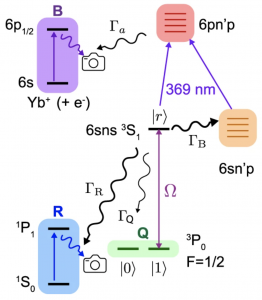
Knowing that eliminating qubit errors is not practical, Kolkowitz and colleagues instead asked if there might be a way to convert the errors into a type known as erasure errors. Named for the fact that the qubit has effectively vanished, or been erased, erasure errors can be beneficial because it is much easier to tell if a qubit is missing than if it is in the correct state or not.
They investigated the largely unstudied (in this context) element ytterbium because it has a relatively simple outer electron structure and its nucleus can only exist in two quantum spin states, +1/2 and -1/2. When manipulated into a metastable electronic state — a temporary state different than the true ground state — the qubit states are then set by the nuclear +1/2 and -1/2 spin states, and the quantum gates involve coupling one of these two qubit states to the Rydberg state.
“We knew that if an atom falls out of the metastable electronic state to the true ground state, we can detect that with a laser and still not screw up any of the other qubits at all,” Kolkowitz says. “But what that means is if I can set up a situation where errors manifest themselves as falling down into the ground state, I can just shine this laser and constantly check for errors and identify the qubit it happened in.”
In their first calculations using this metastable ytterbium platform, they showed that though errors still occur in the qubits as expected, around 98% of them would be converted to the detectable erasure errors.
But is that 98% error conversion rate good enough for a quantum computer in practice? The answer depends on the error threshold, a value that differs depending on the gates and qubits being used. The researchers next ran simulations of different numbers of quantum gates with a 98% erasure error conversion rate, or no conversion to erasure errors at all (as is currently standard).
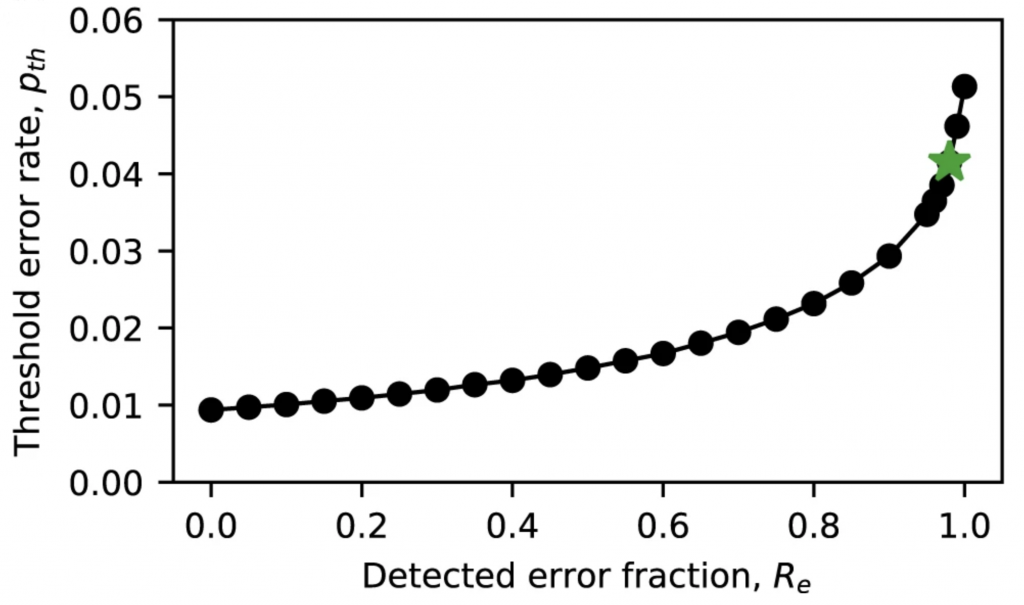
Without erasure error conversion, the error threshold is just shy of 1%, meaning each quantum gate would have to operate at over a 99% success probability to be fault tolerant. With erasure error conversion, however, the error threshold increases 4.4-fold, to just over 4%. And, for example, Saffman’s group has already demonstrated better than 4% error rates in neutral atom qubits.
The higher error threshold also means that there can be a higher ratio of logical qubits to physics qubits. Instead of one logical qubit per 1000 physical qubits, there could be around ten.
“And that’s the point of this work,” Kolkowitz says. “We show that if you can do this erasure conversion, it relaxes the requirements on both the error rates and on the number of atoms that you need.”
Co-author Jeff Thompson, an RQS investigator at Princeton, is already working to demonstrate these results experimentally in his lab. While other elements have been used in neutral atom quantum computing experiments before, until recently ytterbium was largely an unknown. Thompson’s group did much of the preliminary work to characterize the element and show that it could work well as the building block for a quantum computer.
“There were many open questions about ytterbium, and I’d say a lot of people who were using other elements are now moving into ytterbium based on Jeff’s groundwork,” Kolkowitz says. “And I expect that this study will accelerate that trend.”
Yue Wu and Shruti Puri at Yale University collaborated on this study. This work was supported by the National Science Foundation QLCI grants OMA-2120757 and OMA-2016136. Kolkowitz’s part of the work was additionally supported by ARO W911NF-21-1-0012.
Physics & math senior Gage Siebert awarded NSF GRFP
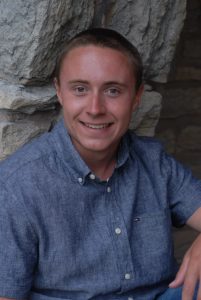
Congratulations to Gage Siebert for being awarded a National Science Foundation Graduate Research Fellowship! Gage is a senior math and physics major who has been conducting research in radio astronomy and cosmology. He is working on the optics of NASA’s EXCLAIM mission and constructing a periodicity search using the Tianlai Radio Array. Gage is also a 2021 Hilldale Fellow and Goldwater Scholar, and has won the department’s Hagengruber Scholarship, Liebenberg Family Scholarship, and Henry & Eleanor Firminhac Scholarship. He plans to attend graduate school but has not decided where yet.
Peter Timbie, Gage’s research advisor, says:
Congratulations Gage on winning one of these exceedingly rare awards! We’re really proud of you,Best of luck with you proposal to search for periodic signals in cosmological survey data and your plans for graduate school.
21 UW–Madison students in total received the fellowship, a highly sought and competitive award. The Graduate Research Fellowship Program supports high-potential scientists and engineers in the early stages of their careers. Each year, more than 12,000 applicants compete for 2,000 fellowship awards.
Awardees from UW–Madison, including both undergraduate and graduate students, represent a variety of specializations across science, engineering, and technology. Another 23 UW–Madison students were recognized with honorable mentions.
The program provides awardees with three years of financial support consisting of a $34,000 annual stipend and a $12,000 education allowance. UW–Madison contributes toward fringe benefits.
Summer 2021 courses have been announced
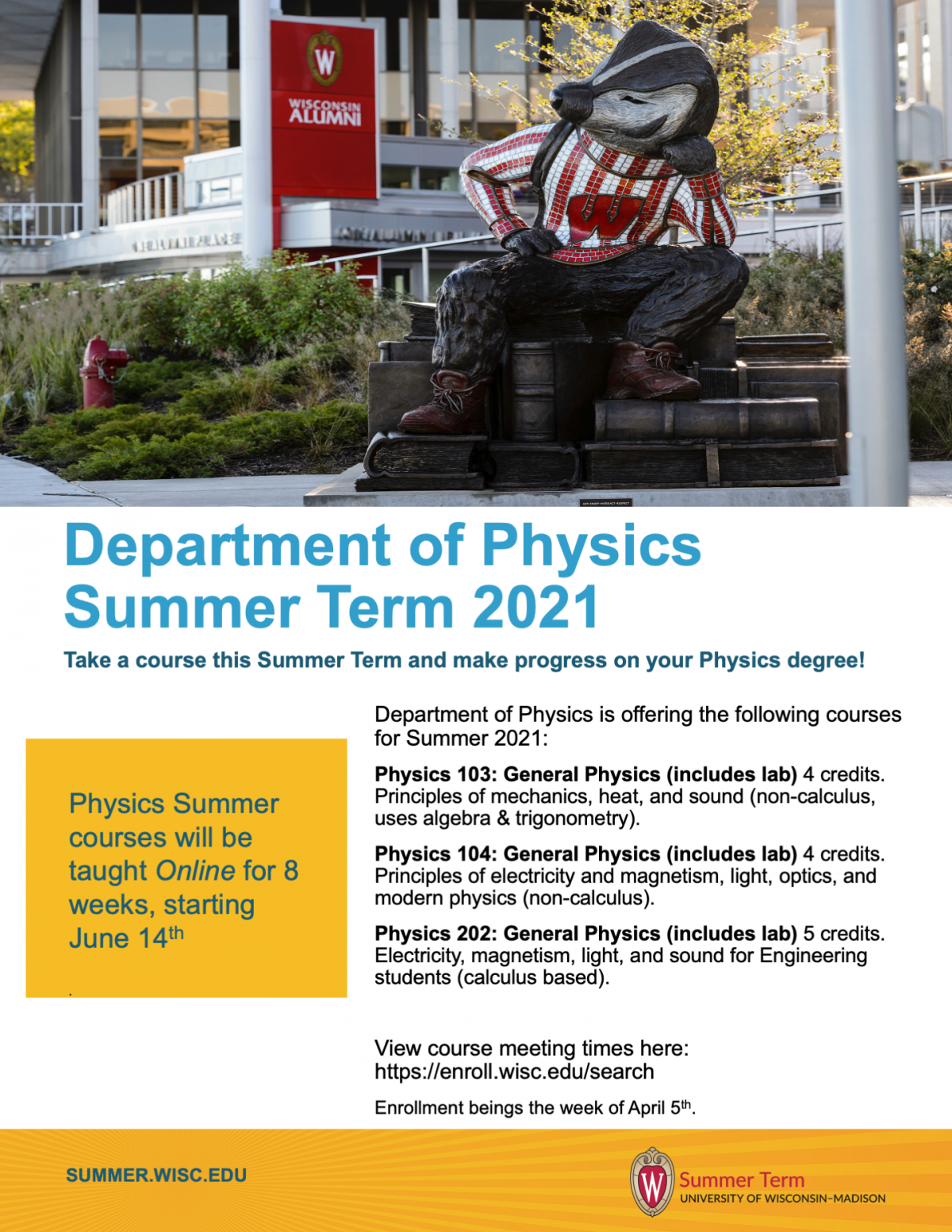
The Department of Physics is offering the following courses for Summer 2021:
- Physics 103: General Physics (includes lab) 4 credits. Principles of mechanics, heat, and sound (non-calculus, uses algebra & trigonometry).
- Physics 104: General Physics (includes lab) 4 credits. Principles of electricity and magnetism, light, optics, and modern physics (non-calculus).
- Physics 202: General Physics (includes lab) 5 credits. Electricity, magnetism, light, and sound for Engineering students (calculus based).
View course meeting times at https://enroll.wisc.edu/search
Enrollment beings the week of April 5th.
Chicago Quantum Summit to foster national center collaborations, build quantum economy
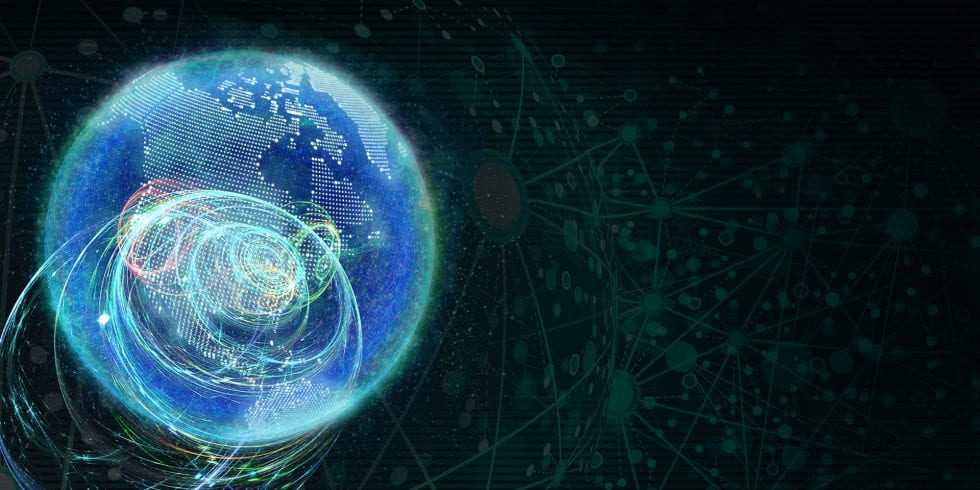
By Emily Ayshford, CQE | Link to original post
Quantum technology experts from around the country will convene virtually on November 11-13 to forge new partnerships amid an exciting year for quantum research.
The third annual Chicago Quantum Summit, hosted by the Chicago Quantum Exchange, will bring together university, government, and industry leaders in the emerging field of quantum information science. The Chicago Quantum Exchange, headquartered at the University of Chicago’s Pritzker School of Molecular Engineering, is a leading national hub for the science and engineering of quantum information and for training tomorrow’s quantum workforce.
This year, the three-day virtual Summit will include presentations and discussions that focus on building collaborations between large-scale quantum research centers, companies, and innovators; fostering a quantum economic ecosystem and growing the quantum startup community; and developing a quantum-ready workforce. It will also include a public event on Nov. 12, featuring a presentation by Scott Aaronson, the David J. Bruton Centennial Professor of Computer Science at The University of Texas at Austin; and a fireside chat with Aaronson and David Awschalom, the director of the Chicago Quantum Exchange.
“The Chicago Quantum Summit will assemble leaders from across the community who are accelerating the development of quantum science and technology,” said Awschalom, who is also the Liew Family Professor in Spintronics and Quantum Information at the UChicago’s Pritzker School of Molecular Engineering and the director of Q-NEXT, a DOE quantum information science center led by Argonne National Laboratory. “This virtual event provides an opportunity to hear perspectives from the broader quantum community, to foster collaboration across large-scale initiatives, to help nurture tomorrow’s quantum engineers, and to develop the quantum economy.”
Speakers include Penny Pritzker, founder and chairman of PSP Partners and former U.S. Secretary of Commerce; Jim Clarke, director of quantum hardware at Intel; and Robert Zimmer, president of the University of Chicago, among others. The summit will also include presentations from leaders of newly announced Department of Energy and National Science Foundation-funded federal centers.
This year’s summit comes on the heels of the announcement of five new U.S. Department of Energy National Quantum Information Science Research Centers and three new National Science Foundation Quantum Leap Challenge Institutes. During the Summit, Harriet Kung, Deputy Director for Science Programs, Office of Science, U.S. Department of Energy; and Sethuraman “Panch” Panchanathan, Director, National Science Foundation; will provide their agencies’ perspectives and aims for building these centers, spanning research through education and workforce development.
Three of these eight national centers are headquartered in Illinois: Q-NEXT, led by Argonne National Laboratory; the Superconducting Quantum Materials and Systems Center, led by Fermilab; and the Quantum Leap Challenge Institute for Hybrid Quantum Architectures and Networks, which is headquartered at the University of Illinois at Urbana-Champaign.
The recent investments in quantum science by the federal government and commitments by leading technology companies support the emerging quantum ecosystem and the development and translation of new technologies. The Summit session on Nov. 13 will focus on the economic impact of quantum science and technology, opportunities to hear from the investor community, and insights into cultivating quantum startups. Penny Pritzker, who also co-chairs P33, a private sector-led nonprofit dedicated to developing the Chicago region into a leading global tech and innovation hub, will give that day’s opening keynote. A panel discussion on advancing quantum startups will include speakers Christopher Monroe, co-founder and Chief Scientist, IonQ; Chris Savoie, founder and CEO, Zapata Computing; and Jennifer Elliott, co-founder and Vice President of Business Development, QEYnet.
“Quantum science has made significant progress in recent years and there is little doubt now that quantum computers will yield transformative products,” said Monroe. “We’re seeing more and more investment and companies getting into the quantum field, but to truly support early stage quantum companies, we need greater government leadership, additional investment and a supportive ecosystem in which to grow.”
This event is open to quantum-interested leaders, researchers, and trainees across industry, universities, government, and national laboratories. Learn more about the speakers, view the agenda, and register for the live sessions on the 2020 Chicago Quantum Summit event website.
Image credit: Peter Allen
A somber remembrance marks the 50th anniversary of the Sterling Hall bombing
On an August afternoon 50 years ago, graduate student Bill Evans bumped into Robert Fassnacht, a postdoctoral researcher, in Sterling Hall at the University of Wisconsin–Madison.
The two didn’t know each other well, but they had talked before. Both were conducting physics experiments in Sterling Hall.
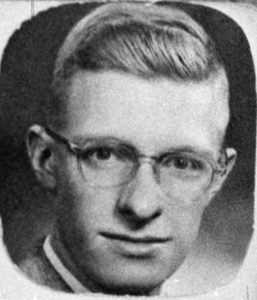
Fassnacht mentioned he’d be working through the night. Evans planned to do the same, so he made a mental note to walk over and chat with Fassnacht at some point.
The conversation never happened. At 3:42 a.m. that morning — August 24, 1970 — a bomb tore through a wing of Sterling Hall, killing Fassnacht. Evans, whose lab was much farther from the blast, felt the building shake but was uninjured.
A short time later, Evans says he and another physics researcher, John Lynch, came upon Fassnacht’s lifeless body.
“That’s the part I’m trying to forget and the reason I haven’t talked about it in all these years,” says Evans, 78, by phone from his home in California. “I still have flashbacks.”
The target of the explosion was the Army Mathematics Research Center, housed on multiple upper floors of Sterling Hall. Four young men orchestrated the bombing as a protest against the center’s research connections with the U.S. military during the Vietnam War.
Fassnacht, 33, working in a basement lab in the Physics Department below the Army Mathematics Research Center, was an unintended victim. His research had no connection to the center. Four others — three in Sterling Hall and one across the street at University Hospital — were injured.
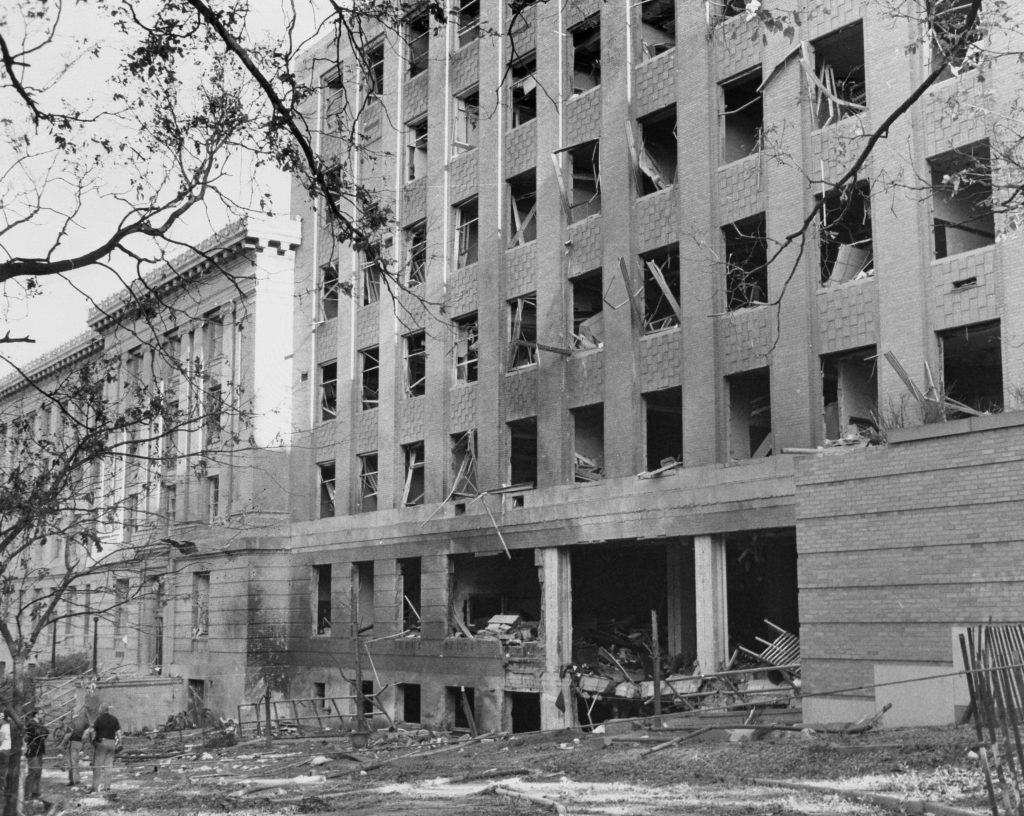
Three of the four bombers — David Fine and brothers Karl and Dwight Armstrong — eventually served prison time. The fourth, Leo Burt, remains at large. Burt and Fine were UW–Madison students at the time.
Evans was pursuing a Ph.D. in atomic physics. He remembers feeling the building shudder, then seeing a wave of dirt and dust blow by a lab door.
He immediately called the university’s overnight phone desk and reported that something terrible had happened at Sterling Hall.
Stepping into the hallway, he tried to head toward the blast’s origin, but thick dust forced him back. He called the UW operator again: “You better get someone over here.”
Evans then went down a basement hallway in the other direction.
“I came upon a night watchman, dazed and covered all over with what looked like pieces of insulation,” he says. “I got him out of the building. There were two policemen nearby, and I yelled, ‘This guy needs help.’”
The night watchman, UW security officer Norbert Sutter, suffered memory impairment, disc problems, and permanent loss of some hearing and vision. The officers who helped Sutter insisted that Evans go with them to University Hospital to be checked for possible injuries. At the time, the hospital was located across Charter Street from Sterling Hall. Evans, certain he was not injured, protested but gave in, then quickly slipped out of the hospital before being evaluated.
Returning to Sterling Hall, Evans says he ran into Lynch. Today, the two differ on the sequence of events that led them to Fassnacht’s body. Both say it’s hard to remember events from so far back — some details remain vivid to them; others have become hazy with time.
The blast had awakened Lynch at his apartment just a few blocks away. He remembers racing to Sterling Hall and entering the building alone. He says he saw Fassnacht’s body, then went looking for others dead or alive inside the building.
“There were no policemen, no firemen yet,” says Lynch, 82, who is retired from the National Science Foundation and lives in Florida. “I’m running around looking for anybody alive. The person I found was Bill Evans.”
Evans thinks he ran into Lynch in the crowd that was forming outside Sterling Hall. He recalls the two of them entering the building together and finding Fassnacht’s body.
“He was face down, with a large piece of concrete on him, and his nose and mouth were under water,” Evans says. “There was no question he was dead. The water (due to broken water pipes) was fairly deep by then.”
The two alerted rescuers to Fassnacht’s body. The pair also helped emergency workers find and shut off a gas leak that had led to a fire, Lynch says.
Later that same day, Lynch recounted the story to a reporter for The Capital Times, the city’s afternoon newspaper. The article’s large headline reads, “I Found Bob Under a Foot of Water.”
Given the era’s anti-war fervor, Lynch says it did not surprise him to look out his bedroom window and see Sterling Hall with a cloud of smoke above it. He had stopped spending evenings at Sterling Hall after a conversation with strangers in a Madison bar a few months earlier.
“One guy said to me, ‘Don’t hang around that place at night. Bad things are going to happen there,’” Lynch says. “I didn’t go to the police because people were saying all sorts of crazy things back then. But I felt I had been forewarned.”
Lynch provided prosecutors with a deposition in the case. Following an esteemed career, he received a Distinguished Alumni Fellow Award in 2003 from UW–Madison’s Physics Department. The department recognized him in large part for his early and sustained support at the federal level of the IceCube Neutrino Observatory, a project at the South Pole managed and operated by UW–Madison.
Evans told his story to law enforcement officers but says he otherwise has rarely discussed his involvement with anyone.
In the spring of 1972, Evans married fellow UW–Madison student Gertrude “Kim” Miller. A few months later, the couple moved to Washington, D.C., where Evans began a job at the U.S. Naval Research Laboratory. He returned to Madison in 1975 to defend his doctoral dissertation but otherwise has not been back to campus.
Evans retired in 2012 following a long career as a research physicist and software architect. He says he’s spent five decades avoiding anything that might trigger a memory of Sterling Hall.
“I tried not to think of it for obvious reasons,” he says. “I guess you could say I disappeared for a good while.”
The experience remains upsetting.
“What happens is it pops up in your memory and then takes about a week to disappear,” Evans says. “I guess it would be like what they talk about with PTSD (post-traumatic stress disorder). If so, I can understand why these people have troubles.”
Late last year, in anticipation of the 50th anniversary of the Sterling Hall bombing this August, UW–Madison issued a call to alumni for memories related to the bombing. Hundreds responded. A sample can be found in the summer 2020 issue of On Wisconsin, the university’s alumni magazine.
Evans was not among those who submitted memories. He says he read the magazine article and found it interesting how the bombing impacted other people. For him, though, it is something he prefers not to reflect on.
“It was so long ago,” he says. “Strange things happen.”
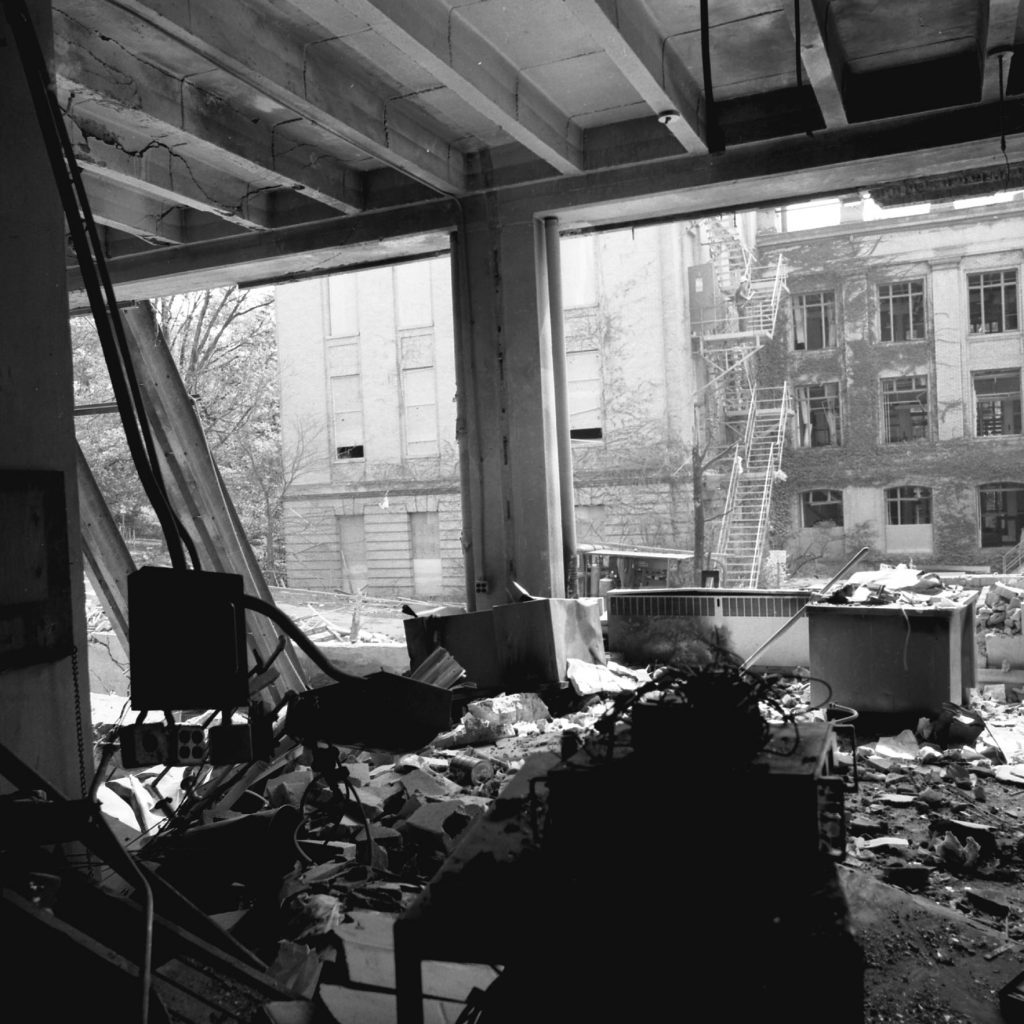
2020 Scholarships and Awards
Congrats to the 2019-20 Department of Physics Scholarship & Award Winners! Please join us in recognizing their achievements at a virual ceremony to be held via Blackboard Collaborate on Thursday, May 7, at 5pm CDT.